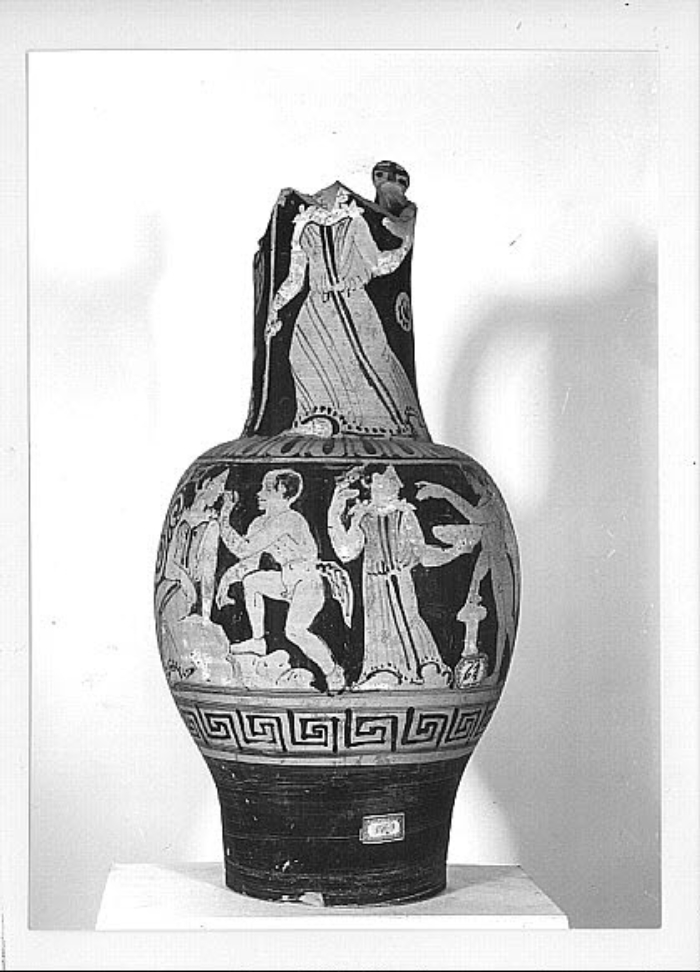
oinochoe
An item at Louvre
Decoration: on collar; maenad (jewel, peplos, with band, belt, sandal, walking, holding, thyrsus, ribboned, phiale); in field; patera (decorated with, semicircle, point) on wheel; crosspiece (pointed) flanking the handle (at the top); half-palmette (flanked by, volute, flowered, cornet) on belly (at the top); tongues (separated by, line, vertical, 2) on belly (in front); courtship scene (2); left; woman (maenad, ?, ribbon, jewel, peplos, belt, shod, seated, on, rock); satyr (naked, bald, shod, foot, on, rock, raising, arm); right; woman (ribbon, jewel, peplos, belt, shod, holding out, phiale, towards); Eros ( nude, chignon, shod, holding, situla) flanking the handle (below); under the handle; vegetal decoration (palmette, surmounted by, patera, flanked by, palmette, closed, oblique, volute, cornet) on the body (below); meander (including, crosspiece) Condition of the work: incomplete; less upper part of the neck; less chips (base); white paint largely erased; 2 small holes in the body
Department of Greek, Etruscan and Roman Antiquities
An exhibit at Louvre
The Department of Greek, Etruscan, and Roman Antiquities is home to a collection of artworks representing the Greek, Etruscan, and Roman civilizations; it illustrates the art of a vast area encompassing Greece, Italy, and the whole of the Mediterranean basin, and spans the period from Neolithic times (4th millennium BC) to the 6th century AD.




